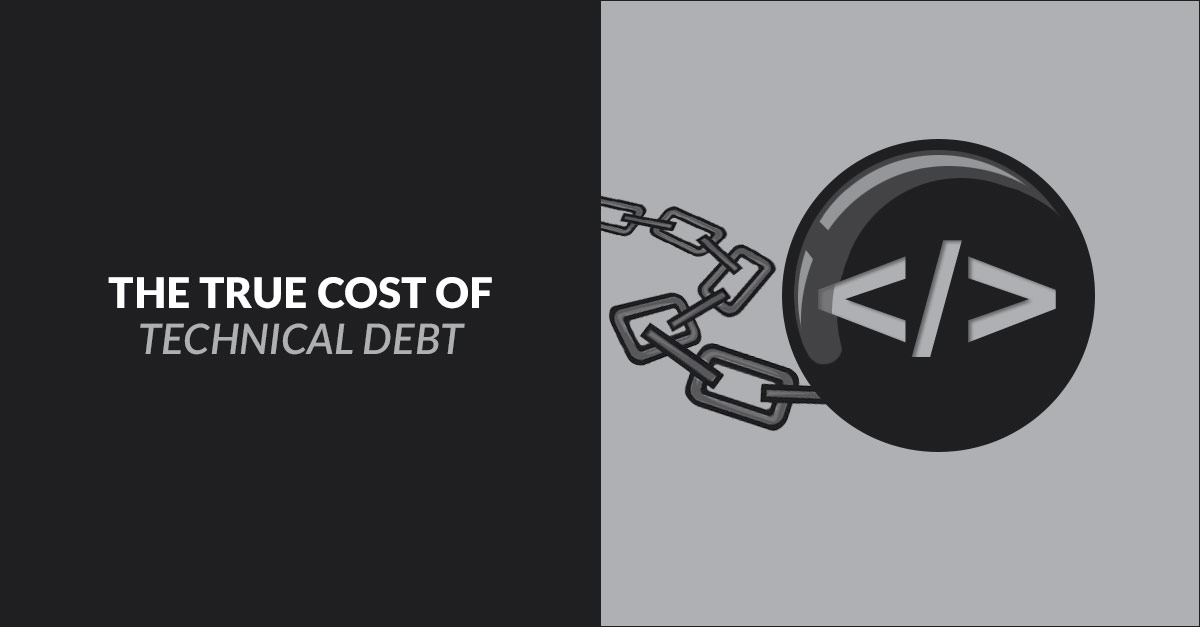
An Introduction to Technical Debt
Technical debt is a fancy term for the extra development work that comes down the road when developers write code that is easy to implement in the short run instead of applying the best overall solution. It’s created by taking a short cut now and paying for it later.
Technical debt is reduced when systems are built optimally the first time. Avoiding technical debt is a software developer’s version of delayed gratification—invest the time building the optimal code now to avoid the pains and investment of reworking code in the future.
Technical Debt Increases Risk
Systems with a lot of technical debt are known for having unexpected functionality issues and other unhappy surprises. They’re also notoriously difficult to test because when you fix one bug, more usually pop up in other parts of the system.

For this and other reasons, technical debt often slows down delivery of new features and functionality and increases the cost of change. When sloppy code is implemented, future changes to the system are more complicated than when clean, quality code is implemented. Enhancements are nearly impossible to estimate correctly because we have to account for the increased risk and complexity that comes with technical debt.
As a system grows—in users, data, and lines of code—performance and speed are impacted. Systems with clean code are more resilient to this growth than systems with high technical debt. So, if system performance and speed are important to your business, reducing or avoiding technical debt helps prevent frustrated users and eventual rework.
Reducing Technical Debt
Avoiding technical debt requires getting comfortable with foregoing short-term shortcuts for the benefits quality code provides in the long term. It requires discipline and trust in the knowledge that implementing the most optimal solution today will lessen frustration (and cost) in the future.
If technical debt already exists in a system, you can choose to move forward with the code as it is, and likely experience surprises and setbacks. If we were talking about financial debt instead of technical debt, this route would be like paying ongoing interest.
Or, you can invest in the future of the system by refactoring the code, which is restructuring the code without affecting features for the user. Refactoring is a behind-the-scenes improvement to the system that makes the code easier to understand and modify. This route is like paying down the principle to reduce or eliminate future interest costs.
Not all Technical Debt is Bad
Just like financial debt in a business, some technical debt is OK. It all depends on your particular situation. Sometimes you have a deadline and need to get the fastest solution delivered, knowing you’ll refactor in the future.
For example, if you’re working on a prototype to get in front of customers quickly, it may not be worth building debt-free. The important thing is to make sure you understand the impact of technical debt now and later, and make an informed decision.
Software systems are never fully free of technical debt. We encourage clients to prioritize technical debt decisions the way they’d consider financial debt. The key is optimizing the amount of technical debt based on existing circumstances and understanding the impact an investment in clean code (or a lack thereof) impacts future costs and timelines.
Custom Software is an Investment
If you invest in developing software the optimal way, technical debt is limited, new functionality is easier to develop, system performance is maintained, and future risk is reduced. Evaluate technical debt like you do any other part of your business to find the optimum solution for your circumstances.
Want to talk about technical debt?
Reach out.